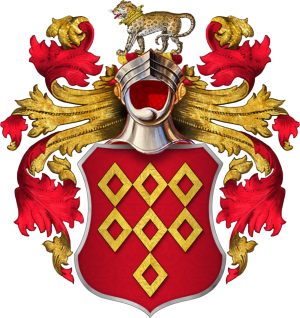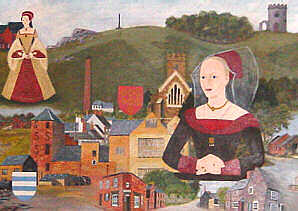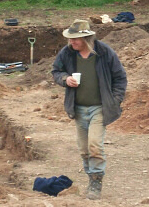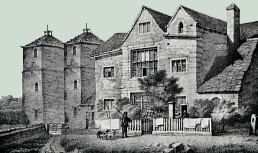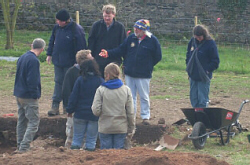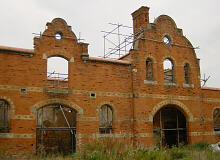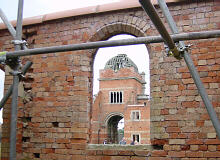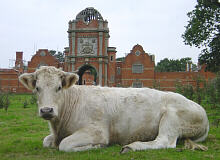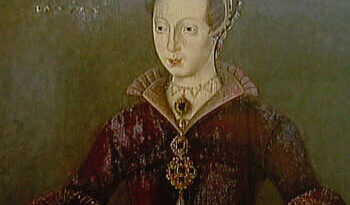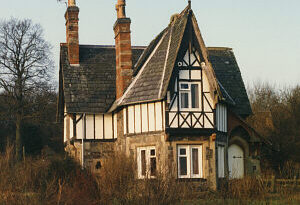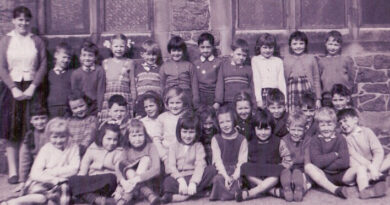The Greys of Groby
The Grey family played a fascinating role in English history, with two of its members becoming ill-fated Queens of England (Elizabeth Woodville, Queen of Edward 1V, mother of the Princes in the Tower and great-grandmother of Elizabeth 1., the other was Lady Jane Grey).
Sir Edward Grey was the first and only member of the Greys to reside at Groby, when he married Elizabeth Ferrers, 6th Baroness Ferrers of Groby connected to the Ferrers family of Derbyshire. Edward would be called to serve Henry VI in London between 1446 – May 1455. In 1452 Elizabeth Woodville married Sir John Grey, first child of Sir Edward and Elizabeth the6th Baroness and they lived at Astley Castle and Grafton in Northamptonshire in Warwichshire. Sir John was later killed in battle, but had been guilty of rebellion against his Sovereign and so his estate was forfeited to the King. His widow, Elizabeth, and sons were ejected from their home and penniless. Joining her parents in Northamptonshire, she was introduced to King Edward IV who took pity upon her impoverished and fatherless boys. She became the Queen of Edward IV, and mother to the two Princes (of Edward IV.) who were later murdered in the Tower of London.
As her sons grew up, honours were heaped upon them. Her eldest son, Thomas Grey, was created Earl of Huntingdon, and in 1475 was made Marquis of Dorset. It was Thomas Grey who began the building at Groby, near the site of the castle. (Only the stone steps of the castle can be found today and the mound on which it stood). However, he was soon attracted by the more beautiful site at Bradgate where he began a large mansion, and it is doubtful whether he ever finished the house at Groby. It is possible that Groby was to be used as the dower-house (house set apart for the widow) as a field by the lane leading to Newtown Linford is still known as “The Dowery.”
Bradgate, formerly included in the manor of Groby, and having formed part of the possessions of the Earls of Leicester, passed to the Ferrars, and from them to the Greys, much in the same manner as Groby. (Bradgate is a park some 820 acres in size and surrounded by a wall over 4 miles in length. The remains of the mansion, destroyed by fire, are still visible today, and the park has become one of the top tourist attractions in Leicestershire).
Henry Grey, third Earl of Dorset, was created Duke of Suffolk in 1551, probably as a compliment to his wife Francis, whose mother was a daughter of Henry VII. Their daughter, Lady Jane Grey, thus a direct descendant of Henry VII., later was induced to lay claim to the Crown of England.
Lady Jane’s right to the Throne was grounded on her direct descent from Edward IV. and Henry VII., and on Henry VIII. having by statute declared the illegitimacy of his daughters (Mary & Elizabeth) and excluded the descendants of his sister Margaret (wife of James IV. of Scotland), and on the will of Edward VI., in which he named lady Jane Grey as his successor.
Although Lady Jane refused to accept the Crown, she was proclaimed Queen at the age of 15, contrary to the general voice of the nation. They perceived that she would become nothing more than a tool in the hands of her father-in-law, John Dudley, (Duke of Northumberland), whom is said to have arranged the marriage of Jane with his son Guilldford. The Duke was disliked by the people and would in reality be the reigning King. She wore the crown for 10 days and, finding the nation against her, returned to private life. Mary was immediately proclaimed Queen; The Duke of Northumberland was put under arrest and executed; Lady Jane Grey and her husband were thrown into the Tower. They too were accused of treason and were sadly beheaded on 12.02.1554. As a permanent reminder of their death, the oak trees in Bradgate Park were pollarded (also beheaded), the scars of which can still be seen today.
In the nineteenth century the family finally returned to Groby where the Seventh Earl built an imposing mansion on Bradgate Hill. All that remains of this mansion is the palatial stable block, now falling into decay.
